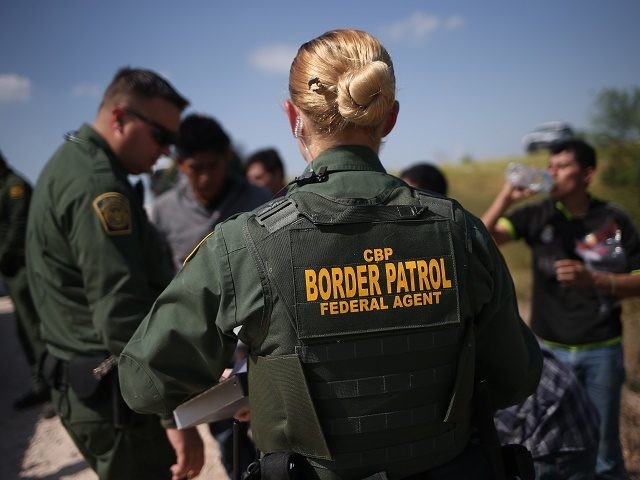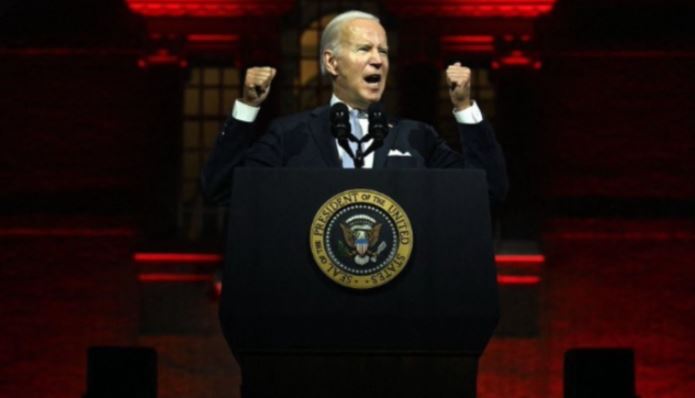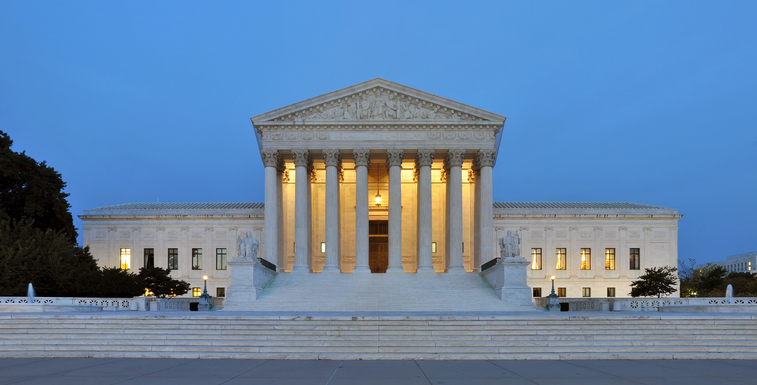Can Texas constitutionally engage in war and protect itself from imminent danger?
01/26/2024 / By News Editors

“No State shall, without the Consent of Congress … engage in War, unless actually invaded, or in such imminent Danger as will not admit of delay.” — Article I, Section 10, Clause 3 of the U.S. Constitution
(Article by Joe Wolverton, II, J.D. republished from TheNewAmerican.com)
“As each state will expect to be attacked and wish to guard against it, each will retain its own militia for it own defense.” — James Madison, speech at the Virginia Ratifying Convention, June 16, 1788
“This is not over. Texas’ razor wire is an effective deterrent to the illegal crossings Biden encourages. I will continue to defend Texas’ constitutional authority to secure the border and prevent the Biden Admin from destroying our property.”
That’s the message sent via X (formerly Twitter) by Texas Governor Greg Abbott on Tuesday.
Obviously, Governor Abbott remains resolute. His declaration that his state’s battle with the federal government is far from over follows a divisive ruling by the Supreme Court on Monday. In a surprising turn of events, the Court, typically leaning conservative, granted a victory to the Biden administration. The ruling allows federal agents to dismantle razor wire that Texas had erected along a stretch of the U.S.-Mexico border.
The installation of this razor wire, strategically placed near the border city of Eagle Pass, was just one of the bold measures taken by the Republican governor in his ongoing efforts to curb illegal immigration. However, the Supreme Court’s decision, delivered with a tight 5-4 vote, saw Chief Justice John Roberts and Justice Amy Coney Barrett, both known for their conservative leanings, siding with the Court’s three liberal justices in support of the administration’s position.
This verdict temporarily permits Border Patrol agents to remove the razor wire that had been placed along the banks of the Rio Grande, pending the outcome of an ongoing lawsuit. The Biden administration’s argument hinges on the belief that the presence of this wire impedes Border Patrol agents from efficiently reaching migrants as they attempt to cross the river. They assert that federal immigration law takes precedence over Texas’ determined efforts to stem the tide of migrants. This decision comes in the wake of a federal appeals court’s ruling last month, which had compelled federal agents to cease their efforts to cut the wire.
As this contentious issue continues to unfold, Governor Abbott remains steadfast in his commitment to secure the border, while the Supreme Court’s decision serves as a significant turning point in the ongoing battle over immigration policy.
For his part, Texas Attorney General Ken Paxton stands solidly behind the governor. Paxton issued the following statement after the Supreme Court decision was announced:
The Supreme Court’s temporary order allows Biden to continue his illegal effort to aid the foreign invasion of America. The destruction of Texas’s border barriers will not help enforce the law or keep American citizens safe. This fight is not over, and I look forward to defending our state’s sovereignty.
Before turning to the expected analysis of federalism, state sovereignty, and the so-called Supremacy Clause, let’s look a lesser-known, little spoken-of clause in the Constitution that could serve as a strong legal basis for Texas’ refusal to retreat in the face of federal aggression.
As quoted above, Article I, Section 10 of the U.S. Constitution preserves to the states the authority to “engage in war” if actually invaded or “in such imminent Danger as will not admit of delay.”
Given the number of “immigrants” and their age and gender (young adult, male), Governor Abbott and AG Paxton could make a very compelling argument that the conditions of invasion and imminent danger are clearly present along the southern border.
The first question, then, for applying this clause to the case of Texas and the crisis at the border with Mexico is: Is Texas being invaded? If not, then the inquiry turns to: Has the influx of undocumented adult males into Texas risen to the level that a reasonable person would consider the danger so imminent as to preclude any delay, such as that of recurring to Congress for help?
That is to say, even if one makes the argument that Texas is not being invaded, as that term would be understood by the Founders, there is still a very strong argument to be made that the state is in imminent danger, thus constitutionally covered in its effort to secure its borders.
Not to put too fine a point on this, but as it stands right now, the most imminent danger posed to Texas is that coming from the statists in D.C.
Evidently, within the framework of state sovereignty and constitutional principles, the entitlement of a state to embark upon warfare when it finds itself in a situation of “imminent danger as will not admit of delay” inherently implies the notion of preemptive action. This constitutional provision affirms a state’s prerogative to proactively initiate a conflict in anticipation of potential hostilities, without being obligated to await an actual attack before taking action to defend its inhabitants.
The question naturally arises, then, does the term “danger” within the phrase “imminent danger” harken back to the previously mentioned term “invaded,” or does it stand independently? In other words, does a state’s prerogative to engage in war hinge solely on the risk of “actual invasion,” or does it encompass any form of impending peril?
Regrettably, the records of the Constitutional Convention provide no definitive guidance on this matter.
The origin of this constitutional clause can be traced to Article VI of the Articles of Confederation, which stipulated: “No State shall engage in any war without the consent of the United States in Congress assembled unless such State be actually invaded by enemies or shall have received certain advice of resolution being formed by some nations of Indians to invade such States, and the danger is so imminent as not to admit of a delay until the United States in Congress assembled can be consulted.”
During the 1787 Constitutional Convention, the Committee of Detail closely adhered to this terminology, except for the reference to the Indians. They proscribed a state from entering into war “unless it shall be actually invaded by enemies, or the danger of invasion be so imminent as not to admit of delay until the Legislature of the United States can be consulted.” This formulation persisted throughout the deliberations, even when the Committee of Style issued their report on September 12.
However, in the final deliberations, just two days prior to the convention’s adjournment, the provision underwent a transformation: The term “invasion” in the latter part of the sentence was omitted, as was the reference to the legislature. Consequently, the provision now read: “or in such imminent danger as will not admit of delay.”
How this oft-overlooked constitutional clause applies to the impasse in Texas is undoubtedly the crux of the contention.
The images and data reveal that the situation is certainly unsustainable, and the flow of military-aged male immigrants must be stanched, lest the crisis crescendo into something much more sinister and much less manageable.
It is here where the sovereignty and independence of the states, as described by James Madison in Federalist 39, 45, and 46 become ballasts of liberty, keeping the ship of state afloat as it sails through uncharted constitutional waters.
The federal government’s primary contention is that border security falls under the purview of federal authority, particularly immigration control. However, Texas’ position is rooted in the concept of federalism, state sovereignty, and the right to protect its people from invasion. Texas argues that it has the right to step in, especially when the issue directly affects its citizens’ safety and economic well-being.
Furthermore, the state’s decision to exclude federal agents from certain areas can be interpreted as an assertion of its right to manage its own law-enforcement resources and strategies. While the Supremacy Clause of the Constitution ensures that federal law generally takes precedence over state law, it does not grant the federal government an unlimited mandate to intervene in state-controlled areas, especially when the federal actions are perceived as inadequate or counterproductive to the state’s objectives.
Critically, Texas’ actions should also be understood in the context of the state’s unique historical and geographical position. Sharing a vast border with Mexico, Texas has been uniquely impacted by federal border policies. The state has repeatedly voiced concerns about illegal immigration, drug trafficking, and other cross-border issues. By taking matters into its own hands, Texas is not only seeking to protect its citizens but also sending a clear message to the federal government about the urgency of effective border management.
It’s essential to recognize that this conflict isn’t merely about border security, but is a profound constitutional dialogue about the balance of power between the federal government and the states.
Regarding the majority of the Supreme Court’s apparent advocacy of the absolute supremacy of the federal government, Article VI does not support that view, regardless of how many black-robed oligarchs proclaim it to be so.
Now, as for this so-called Supremacy Clause, as well as the pretended power of the Supreme Court to be the ultimate judge of constitutionality:
First, notice the things that Article VI lists as the “supreme law of the land”:
- The Constitution
- Laws of the United States made in pursuance of the Constitution
- Treaties made under the authority of the United States
What do you find missing there? Supreme Court opinions! The opinions of the Supreme Court are not listed as being part of the “supreme law of the land,” so how in the world can their opinions be considered the definition of the supreme law of the land? That is absolutely ridiculous!
There is an ancient legal maxim that reads: “Expressum facit cessare tacitum.”
Translated into English, it reads, “What is expressed makes what is implied silent.”
In other words, if the Founders had intended to include Supreme Court opinions in the list of those things making up the “supreme law of the land,” then they would have done so. They didn’t, therefore they aren’t.
Furthermore, the fact is the Supremacy Clause does not declare that all laws passed by the federal government are the supreme law of the land, period. A closer reading reveals that it declares the “laws of the United States made in pursuance” of the Constitution are the supreme law of the land.
In pursuance thereof, not in violation thereof. Any act of the federal government not permissible under any enumerated power given to Congress in the Constitution is not made in pursuance of the Constitution, therefore it is not the supreme law of the land and may be declared null and void by the states.
As Alexander Hamilton clearly explained in Federalist 78:
There is no position which depends on clearer principles, than that every act of a delegated authority, contrary to the tenor of the commission under which it is exercised, is void. No legislative act, therefore, contrary to the Constitution, can be valid.
Next, the Tenth Amendment plays a pivotal role in this debate. It serves as a bulwark of state sovereignty, ensuring that powers not delegated to the federal government are reserved to the states. This amendment underpins Texas’ argument that in areas where either the federal government has failed to act or its actions are insufficient, the state has the authority to step in, particularly in matters that directly impact the safety and well-being of its residents. Texas’ decision to install barriers and restrict federal patrolling can be seen as an exercise of its reserved powers, especially considering that law enforcement and public safety are typically state-regulated domains.
Moreover, the Invasion Clause of Article IV, Section 4 is central to this discourse. This clause obligates the federal government to protect each state against invasion. Texas’ interpretation of this provision is crucial. The state argues that the continuous illegal crossing of its borders constitutes an “invasion” that the federal government has failed to adequately repel. Consequently, Texas claims the right to take necessary measures, including the erection of physical barriers and the regulation of law-enforcement activities within its territory, to protect itself against this perceived invasion.
This interpretation by Texas raises profound questions about the nature of federal responsibilities and the scope of state rights in responding to what they consider an invasion. While the traditional understanding of an invasion pertains to hostile foreign entities, Texas expands this definition to include unregulated border crossings that threaten its security and order. This expanded interpretation challenges the federal government’s authority and responsibility in border management and opens a constitutional dialogue about the limits and extents of state and federal powers in such unique circumstances.
The bottom line is that the Biden administration is either interfering in the sphere of state sovereignty, or refusing to comply with the mandate that it protect the states from invasion. Either way, it is not complying with the Constitution, and Texas — and every other state — is within her constitutional and moral rights to step into that breach and protect the life, liberty, and property of the people of that state.
Finally, it is noteworthy to remind readers that although the Supreme Court has permitted the continued destruction of Texas’ border security measures, this appeal remains ongoing, and the Office of the Attorney General will argue the case in front of the Fifth Circuit on February 7.
Read more at: TheNewAmerican.com
Submit a correction >>
Tagged Under:
big government, Border Patrol, border security, chaos, Collapse, conspiracy, Constitution, Dangerous, freedom, illegal immigration, Immigration, insanity, invasion usa, Joe Biden, Liberty, migrants, Open Borders, politics, Resist, revolt, self-defense, Texas, US Constitution, White House
This article may contain statements that reflect the opinion of the author
RECENT NEWS & ARTICLES
COPYRIGHT © 2017 FREEDOM NEWS




















